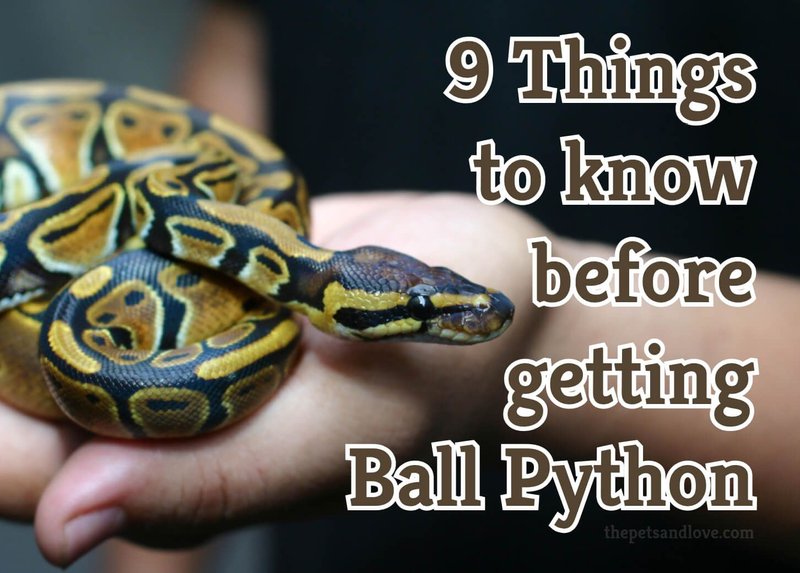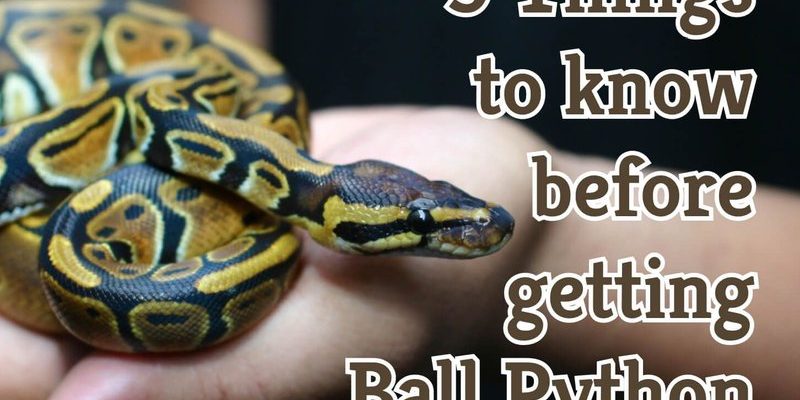
Now, you might be wondering why it’s crucial to separate myths from facts. Understanding these myths not only helps prospective pet owners make informed decisions, but it also promotes better care practices. After all, a well-informed owner leads to a happier, healthier snake—kind of like how being informed makes us better friends!
Myth 1: Ball Pythons Are Dangerous to Humans
One prevalent myth is that ball pythons are dangerous, often perpetuated by sensationalized media coverage. Here’s the thing: ball pythons are considered one of the gentlest snake species. They’re not aggressive and only bite when they feel threatened. Their natural behavior is to curl into a ball—hence the name—when scared or unsure.
In fact, many ball pythons thrive in captivity because they become accustomed to handling. With patience and gentle interaction, these snakes often enjoy being held. A little socialization goes a long way! When you treat them with respect, they’ll likely respond positively. You can think of it as building a friendship; trust takes time and care.
Understanding Their Behavior
Let’s break down why they behave this way. In the wild, ball pythons are prey, so their instinct is to remain hidden and avoid confrontation. When handling your ball python, remember that slow movements and soothing voices help reduce their anxiety. It’s a bit like putting on calming music before a big presentation—creating a comfortable atmosphere can make all the difference!
Myth 2: Ball Pythons Need Large Enclosures
Another common belief is that ball pythons need massive enclosures to be happy and healthy. The truth? While they certainly appreciate space, smaller, well-decorated habitats are often better suited for them. Think cozy, not cavernous! A 20-gallon tank is usually sufficient for a juvenile ball python, with upgrades to 40 gallons as they grow.
Providing hides (places where they can feel safe) is crucial in their setup. If they feel secure, they’ll thrive. Just like people, they need a safe zone to feel at ease. You might want to include branches, climbing spots, and some warmth to mimic their natural environment.
Creating a Comfortable Habitat
To make your ball python feel at home, consider the following essentials:
- Temperature gradient: Provide a warm side and a cool side in the enclosure.
- Humidity: Keep humidity between 50-60% to ensure proper shedding.
- Hiding places: Offer at least two hides—one on the warm side and one on the cool side.
These features help replicate their natural habitat, leading to a happier snake!
Myth 3: They Only Eat Live Prey
Many newcomers to the hobby believe that ball pythons can only be fed live prey. While they do hunt live animals in the wild, it’s perfectly fine (and often safer) to feed them frozen and thawed rodents. This method not only makes feeding easier but can also prevent injuries to both the snake and the prey.
It’s a little like how some people prefer takeout over cooking at home; both can be done, but one often leads to less hassle and more convenience. Additionally, feeding frozen-thawed prey reduces risks of accidents during feeding time and lowers the stress for both animals involved.
Feeding Schedule Matters
When you feed your ball python, consider their age and size. Hatchlings may eat every 5 to 7 days, while adults generally eat once every week to ten days. Keeping to a schedule helps your snake feel secure and allows them to digest their meals properly.
Remember, if they seem uninterested in food, it’s not necessarily a cause for alarm. Sometimes, snakes fast during shedding or environmental changes, which is perfectly normal!
Myth 4: Ball Pythons Are Low-Maintenance Pets
While ball pythons may not require daily walks like a dog, they are not entirely low-maintenance. This misconception can lead to disappointment for new pet owners. It’s essential to commit to their care and habitat needs. Honestly, they might be easier than some pets, but they still need regular attention.
Regular cleaning of their enclosure, monitoring their health, and providing proper nutrition are all key responsibilities. Remember, owning a ball python is a long-term commitment—these snakes can live for 20-30 years with proper care!
Being a Responsible Owner
As a responsible owner, keep an eye on their behavior. If your ball python is frequently hiding, not eating, or showing signs of illness (like shedding difficulties), it’s time to consult a veterinarian. Just like checking in on a friend who seems off, regular monitoring is essential for their well-being.
Myth 5: Female Ball Pythons Are Always Aggressive
There’s a myth that female ball pythons are much more aggressive than males. This idea likely stems from the instincts nature has hardwired into them, especially during breeding season. However, aggression varies based on the individual snake rather than their gender.
Just like people, snakes have different personalities! Many female ball pythons can be just as docile and friendly as males. The key is how they’re handled and socialized from a young age. Early interactions can lead to a calm demeanor, so don’t be afraid to engage with your pet!
Observing Temperament
When choosing a ball python, observe their behavior at the shop or breeder’s facility. If they seem calm and curious, they’re likely a good candidate for a friendly pet. Building rapport with your snake is a journey, and every little interaction helps.
In the world of exotic pets, the ball python shines brightly, capturing the admiration of many enthusiasts. Unfortunately, the myths surrounding them can create barriers for potential owners. By debunking these common misconceptions, we can help more people appreciate these incredible snakes and provide the best care possible.
With a little understanding of their nature and needs, you can embark on a rewarding journey with your ball python companion. Just remember: knowledge is power, and the more you learn, the better you can provide the care they deserve. So grab that coffee, enjoy the process, and get ready to form a unique bond with your new scaly friend!

